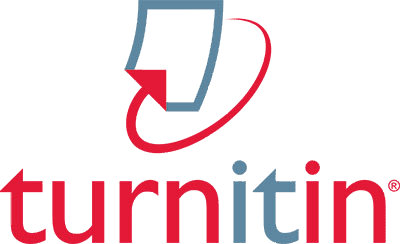LEMAK BUKAN MUSUH: EDUKASI GIZI ANAK DAN REMAJA TENTANG LEMAK SEHAT FAT IS NOT THE ENEMY: NUTRITIONAL EDUCATION FOR CHILDREN AND ADOLESCENTS ABOUT HEALTHY FATS
Abstract
Abstrak
Persepsi yang keliru tentang lemak sebagai komponen nutrisi yang harus dihindari masih banyak ditemukan pada anak dan remaja. Tujuan dari kegiatan ini adalah memberikan edukasi gizi kepada anak dan remaja tentang pentingnya lemak sehat dalam pola makan sehari-hari. Kegiatan edukasi dilaksanakan di SMPN 95 Jakarta Utara dengan sasaran siswa kelas VII. Metode yang digunakan adalah edukasi interaktif melalui pemaparan materi, diskusi, dan evaluasi menggunakan pre-test dan post-test. Materi yang disampaikan meliputi pengertian lemak, jenis-jenis lemak, peran lemak dalam tumbuh kembang, serta sumber makanan yang mengandung lemak sehat. Hasil pre-test menunjukkan bahwa mayoritas peserta memiliki persepsi negatif tentang lemak dan kurang memahami peran penting lemak sehat bagi tubuh. Setelah edukasi, terjadi peningkatan signifikan pada hasil post-test, dengan peserta mampu membedakan jenis lemak sehat dan tidak sehat serta memahami fungsi vital lemak dalam pertumbuhan dan perkembangan. Kegiatan ini berhasil meningkatkan literasi gizi peserta dan mengubah persepsi negatif terhadap lemak menjadi pemahaman yang lebih seimbang. Direkomendasikan agar edukasi gizi sejenis dilakukan secara berkelanjutan dengan metode yang lebih beragam untuk memperluas dampak positifnya.
Kata Kunci: edukasi gizi, lemak sehat, literasi gizi, remaja, anak-anak
Abstract
Misconceptions about fat as a nutritional component that should be avoided are still commonly found among children and adolescents. The purpose of this activity was to provide nutritional education to children and adolescents about the importance of healthy fats in their daily diet. The educational activity was conducted at SMPN 95 North Jakarta with seventh-grade students as the target audience. The method used was interactive education through material presentation, discussion, and evaluation using pre-test and post-test. The material covered included the definition of fat, types of fat, the role of fat in growth and development, and food sources containing healthy fats. Pre-test results showed that the majority of participants had negative perceptions about fat and lacked understanding of the important role of healthy fats for the body. After the education, there was a significant improvement in the post-test results, with participants able to distinguish between healthy and unhealthy types of fat and understand the vital function of fat in growth and development. This activity successfully increased the participants' nutritional literacy and changed negative perceptions of fat into more balanced understanding. It is recommended that similar nutrition education be conducted continuously with more diverse methods to expand its positive impact.
Keywords: nutrition education, healthy fats, nutrition literacy, adolescents, children
Keywords
Full Text:
PDFReferences
Kementerian Kesehatan RI. (2019). Pedoman Gizi Seimbang Indonesia. Jakarta: Direktorat Jenderal Kesehatan Masyarakat.
Sartika, R. A. D. (2018). Pengaruh asupan asam lemak trans terhadap profil lipid darah. Jurnal Kesehatan Masyarakat Nasional, 12(2), 89-96.
Gleason, P. M., & Suitor, C. W. (2014). Dietary Intake and Nutritional Status of US School Children: Trends and Implications for Prevention. U.S. Department of Agriculture.
Perdana, F., Madanijah, S., & Ekayanti, I. (2017). Pengembangan media edukasi gizi berbasis android dan website serta pengaruhnya terhadap perilaku tentang gizi seimbang siswa sekolah dasar. Jurnal Gizi dan Pangan, 12(3), 169-178. https://doi.org/10.25182/jgp.2017.12.3.169-178
Kostanjevec, S., Jerman, J., & Koch, V. (2013). The effects of nutrition education on 6th graders knowledge of nutrition in nine-year primary schools in Slovenia. Eurasia Journal of Mathematics, Science & Technology Education, 9(3), 235-245. https://doi.org/10.12973/eurasia.2013.933a
Yusoff, H., Daud, W. N. W., & Ahmad, Z. (2019). Effectiveness of nutrition education vs. non- nutrition education intervention in improving nutrition knowledge and dietary practices among adolescents in their secondary schools. International Journal of Public Health and Clinical Sciences, 6(1), 121-132.
Abala, K. (2022). Food and Nutrition Education for Adolescents: Strategies for Effective Intervention. Journal of Nutrition Education and Behavior, 54(2), 121-130. https://doi.org/10.1016/j.jneb.2021.08.015
Ruxton, C. H. S., Reed, S. C., Simpson, M. J. A., & Millington, K. J. (2004). The health benefits of omega-3 polyunsaturated fatty acids: a review of the evidence. Journal of Human Nutrition and Dietetics, 17(5), 449-459. https://doi.org/10.1111/j.1365- 277X.2004.00552.x https://doi.org/10.21109/kesmas.v12i2.1342
Story, M., Neumark-Sztainer, D., & French, S. (2018). Individual and environmental influences on adolescent eating behaviors. Journal of the American Dietetic Association, 118(7), 1125-1135. https://doi.org/10.1016/j.jada.2018.01.001
Wickramasinghe, K., Breda, J., Berdzuli, N., Rippin, H., Farrand, C., & Hallström, L. (2020). Nutritional literacy of school adolescents and its association with their dietary behaviour. Nutrients, 12(7), 1965. https://doi.org/10.3390/nu12071965
World Health Organization. (2023). Healthy Diet: Key Facts. WHO. https://www.who.int/news-room/fact-sheets/detail/healthy-diet.
DOI: https://doi.org/10.52447/paj.v4i2.8371
Refbacks
- There are currently no refbacks.


